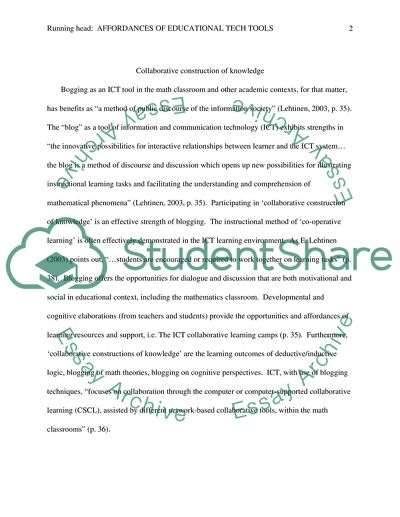Cite this document
(“Affordances of an Educational Technology Tool (Blogs) Essay”, n.d.)
Affordances of an Educational Technology Tool (Blogs) Essay. Retrieved from https://studentshare.org/education/1605232-affordance-of-an-educational-technology-tool-blogs
Affordances of an Educational Technology Tool (Blogs) Essay. Retrieved from https://studentshare.org/education/1605232-affordance-of-an-educational-technology-tool-blogs
(Affordances of an Educational Technology Tool (Blogs) Essay)
Affordances of an Educational Technology Tool (Blogs) Essay. https://studentshare.org/education/1605232-affordance-of-an-educational-technology-tool-blogs.
Affordances of an Educational Technology Tool (Blogs) Essay. https://studentshare.org/education/1605232-affordance-of-an-educational-technology-tool-blogs.
“Affordances of an Educational Technology Tool (Blogs) Essay”, n.d. https://studentshare.org/education/1605232-affordance-of-an-educational-technology-tool-blogs.


